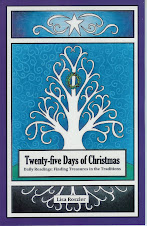HISTORY
St. Francis of Assisi is credited with giving us the first nativity scene in the year 1223 AD.
One account tells that he and his fellow monks performed a play that year for the people of a poor Italian village. The play was held in a cave and was intended to be a reminder to the villagers that Jesus was born for them, into a poor family like theirs. Another account paints the picture of St. Francis performing a nativity play himself, using small wooden pieces to represent the characters.
A lasting tradition is that St. Francis asked a man named Giovanni Vellita of the village of Greccio to create a manger scene. St. Francis performed mass in front of this early Nativity scene, which inspired awe and devotion in all who saw it.
The play became hugely popular and the creation of the figures or pastori became an entire genre of folk art.
Nativity scene figures always include Mary and Joseph. Jesus is often added on Christmas Day (or late on Christmas Eve), usually placed in a manger. Some scenes have shepherds, sheep and angels. Wise Men and their camels traditionally wait to arrive until the twelfth day after Christmas, known as Epiphany.
There are two traditions of portraying Mary:
The Western tradition says Mary was virginal and also was not subject to the curse of Eve (a Catholic teaching that her soul was pure when her body received it in her own mother’s womb). Therefore she did not suffer during labor. This is why she is depicted either seated, holding Jesus on her lap, or on her knees in adoration.
The Eastern tradition, on the other hand, emphasizes the reality of the incarnation of Jesus and his human birth: Mary, having just given birth, is pictured lying down.
INSIGHT
Mary lived far from Bethlehem, yet prophecy held that the Messiah would be born there. How did God solve the disparity? He used a Caesar to order a census. He always has a plan, though we might not always see or know it.
SUGGESTION
Display a nativity scene in your home. You could put the Wise Men in a separate room and move them closer, day by day, until Epiphany (January 6). Keep shepherds on a hillside close by, until Jesus is born. Add a little straw to the manger as the time draws near. Read Luke 2:1-19 and Matthew 2:1-11 as you move the characters.
Thursday, December 3, 2009
Wednesday, December 2, 2009
Day Two of Twenty-five Days of Christmas
ADVENT
HISTORY
The word “advent” comes from the Latin word adventus meaning "coming". It is celebrated for the four weeks that precede Christmas, one week for every millennium between the Fall of Adam and the Birth of Christ.
Advent was not always associated with the birth of Christ. In the early Church, it was His second coming that was anticipated, not His birth. (Latin adventus is the translation of the Greek word parousia, used in reference to the Second Coming.) Eventually, the Church extended the celebration of Advent to include the coming of Christ through his birth in Bethlehem.
Observing the season of Advent with an advent wreath is one way to keep Christ literally at the center of our attention: the wreath has a white candle in the center, representing Christ. Four other candles, three purple and one pink, are arranged in the greenery of the wreath itself and are lit on each Sunday in Advent. The light grows each week, reflecting the growing anticipation of the birth of Jesus, the Light of the world.
Purple symbolizes repentance and fasting. Purple is also the color of royalty, in anticipation of the coming King.
Pink or rose represents joy and reveals a shift in the season away from repentance and toward celebration. This candle is lit on the fourth Sunday in Advent.
The white candle in the center represents Christ and is lit on Christmas Day.
INSIGHT
Advent is a time of preparation for Christ. But is it really Christmas, the Christian Christmas, for which you are preparing? Are you calm, or stressed? Joyful or jangled? Does your list of things to get done take precedence over sitting with God every morning? What would one of the first century Christians think Christmas was about, judging only from your behavior/schedule/attitude?
SUGGESTION
Consider an advent wreath for your home. It can be as simple as candles in a circle on your dining room table, but be sure to place it where you can see it often. Light one candle on each Sunday beginning the Sunday after Thanksgiving. Why not set it up after Thanksgiving dinner and start a new tradition of beginning the season when your hearts are still full of gratitude to God?
HISTORY
The word “advent” comes from the Latin word adventus meaning "coming". It is celebrated for the four weeks that precede Christmas, one week for every millennium between the Fall of Adam and the Birth of Christ.
Advent was not always associated with the birth of Christ. In the early Church, it was His second coming that was anticipated, not His birth. (Latin adventus is the translation of the Greek word parousia, used in reference to the Second Coming.) Eventually, the Church extended the celebration of Advent to include the coming of Christ through his birth in Bethlehem.
Observing the season of Advent with an advent wreath is one way to keep Christ literally at the center of our attention: the wreath has a white candle in the center, representing Christ. Four other candles, three purple and one pink, are arranged in the greenery of the wreath itself and are lit on each Sunday in Advent. The light grows each week, reflecting the growing anticipation of the birth of Jesus, the Light of the world.
Purple symbolizes repentance and fasting. Purple is also the color of royalty, in anticipation of the coming King.
Pink or rose represents joy and reveals a shift in the season away from repentance and toward celebration. This candle is lit on the fourth Sunday in Advent.
The white candle in the center represents Christ and is lit on Christmas Day.
INSIGHT
Advent is a time of preparation for Christ. But is it really Christmas, the Christian Christmas, for which you are preparing? Are you calm, or stressed? Joyful or jangled? Does your list of things to get done take precedence over sitting with God every morning? What would one of the first century Christians think Christmas was about, judging only from your behavior/schedule/attitude?
SUGGESTION
Consider an advent wreath for your home. It can be as simple as candles in a circle on your dining room table, but be sure to place it where you can see it often. Light one candle on each Sunday beginning the Sunday after Thanksgiving. Why not set it up after Thanksgiving dinner and start a new tradition of beginning the season when your hearts are still full of gratitude to God?
Tuesday, December 1, 2009
Day One's Reading from My New Book!
Christmas Beginnings
HISTORY
We celebrate Christmas as the birthday of Jesus. But the Bible does not record the date of His birth, so how was December 25 chosen?
The answer comes from the historical pattern of the Church of eradicating pagan practices by Christianizing them.
In Northern Europe, the pagans celebrated the winter solstice in late December. The Romans honored their god Saturn and the “birth of the unconquered sun” (dies natalis solis invicti') on December 25. The Church decided instead to celebrate the birth of the Son (who was certainly unconquered!), and incorporated the pagan traditions of Saturnalia, changing their meanings. Thus the celebrations would not be a stumbling block to new converts, who could continue with their long-loved customs, albeit with new meaning.
A nativity celebration first appeared on the Roman Church calendar on December 25, 336 AD.
INSIGHT
As you read through this book, you will find that many of our Christmas customs have their origins in paganism.
Does this mean we should be appalled and decide to not celebrate? I don’t think that’s a good response!
In the heart of the Christian worshipper, the focus of this season is the gift of Jesus Christ and His gift of eternal life. Ancient pagan ways have been given new meaning. We do not celebrate Saturnalia on December 25!
This is the time of year when even many non-Christians pause to think about the meaning of Christmas. If it is our purpose to bring them to Jesus, then we can use even these secular aspects to point them towards Him.
Like Peter the Jew reaching out to Cornelius the Gentile, we the Christians reach out to the lost. We have to meet them where they are.
SUGGESTIONS
Read Acts 10:1- 11:24 to learn about Peter and Cornelius. This “reaching out to the non-Jew” was a major turning point for the Church. Without it, you and I may never have known Christ.
Whom do you know that needs to be pointed towards the Reason for the Season? Pray for that person and ask God for ways to reach out to them.
HISTORY
We celebrate Christmas as the birthday of Jesus. But the Bible does not record the date of His birth, so how was December 25 chosen?
The answer comes from the historical pattern of the Church of eradicating pagan practices by Christianizing them.
In Northern Europe, the pagans celebrated the winter solstice in late December. The Romans honored their god Saturn and the “birth of the unconquered sun” (dies natalis solis invicti') on December 25. The Church decided instead to celebrate the birth of the Son (who was certainly unconquered!), and incorporated the pagan traditions of Saturnalia, changing their meanings. Thus the celebrations would not be a stumbling block to new converts, who could continue with their long-loved customs, albeit with new meaning.
A nativity celebration first appeared on the Roman Church calendar on December 25, 336 AD.
INSIGHT
As you read through this book, you will find that many of our Christmas customs have their origins in paganism.
Does this mean we should be appalled and decide to not celebrate? I don’t think that’s a good response!
In the heart of the Christian worshipper, the focus of this season is the gift of Jesus Christ and His gift of eternal life. Ancient pagan ways have been given new meaning. We do not celebrate Saturnalia on December 25!
This is the time of year when even many non-Christians pause to think about the meaning of Christmas. If it is our purpose to bring them to Jesus, then we can use even these secular aspects to point them towards Him.
Like Peter the Jew reaching out to Cornelius the Gentile, we the Christians reach out to the lost. We have to meet them where they are.
SUGGESTIONS
Read Acts 10:1- 11:24 to learn about Peter and Cornelius. This “reaching out to the non-Jew” was a major turning point for the Church. Without it, you and I may never have known Christ.
Whom do you know that needs to be pointed towards the Reason for the Season? Pray for that person and ask God for ways to reach out to them.
Subscribe to:
Posts (Atom)


